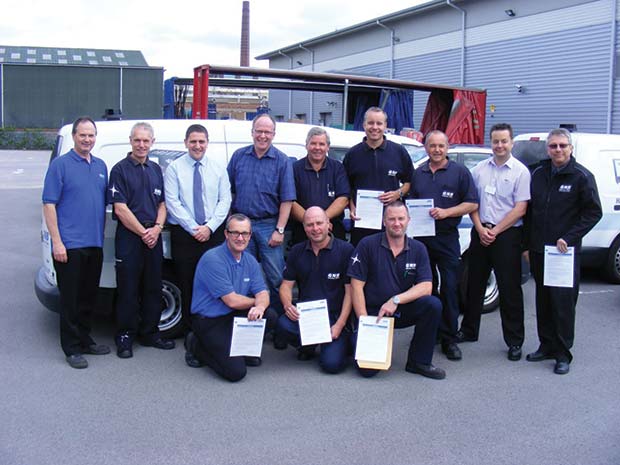GNB Industrial Power, a supplier of industrial batteries and chargers, have announced the successful certification of its service management, engineers and product support team who can now perform the necessary work on explosion-protected batteries according to the Workplace Directive 1999/92/EC, also known as ATEX 137.

Workplace Directive 1999/92/EC or ATEX 137 refers to the minimum requirements for improving the health and safety protection of workers who are potentially at risk from explosive atmospheres. GNB Industrial Power’s ATEX 137 certified Engineers are an asset to customers who depend on ATEX certified Materials Handling Equipment (MHE) – such as fork lifts and industrial trucks – to keep their business running. The certification ensures that GNB Service Engineers are now trained and equipped to carry out work on batteries at customers’ premises affording them a greater degree of convenience.
Mark Fisher, Application and Product Manager at GNB Industrial Power, who along with five Engineers attended a two-day course to achieve the certification, emphasised that safety takes priority in all of GNB’s operations. He said, “We have a systematic approach to health, safety, security and environmental management to enable us to achieve continuous improvement in performance. The quality of what we do has been the most significant priority of our business. Achieving this certification demonstrates our commitment to the ongoing improvement of our business and keeping the client at the heart of everything we do.”
The ATEX 137 Workplace Directive requires companies to demonstrate that they have organisational and technical measures in place to effectively control explosion risks. The Directive covers all plants where explosive or flammable materials occur. These include factories that produce chemicals, oils, inks, petrol, solvents, gas refineries and other flammable and dusty environments where a potentially explosive atmosphere may be present.
ATEX is a European Standard that has been developed in part by the European Committee for Electrotechnical Standardisation (CENELEC) and the International Electrotechnical Commission (IEC). Hazardous Atmosphere standards were applied initially in the mining industry. However, they evolved and spread to other areas, most notably the oil, chemicals and pharmaceuticals industries and since July 2003 are subject to the European ATEX Directive. Government organisations are justifiably concerned about the risk posed by explosions – particularly on the general population, as the distance between industrial and residential areas gets even smaller. All industries now come under the jurisdiction of ATEX including food processing, manufacturing and warehousing. The end user has to assess the operation and determine if any part of it could be classified as a hazardous atmosphere.
Batteries are unique amongst the products covered by the ATEX Directive in that they need to “breathe”. A battery generates its own gases that are potentially explosive. For this reason, the design of the ventilation of the battery and its ability to resist water and solids ingress are all important features which require regular inspection and maintenance to maintain their certified status. Damaged ATEX batteries need to be identified and repaired in accordance with the ATEX Directive to ensure that they can be safely used in an explosive atmosphere.
ATEX certified batteries are constructed to the latest edition of the EN Standards, which is a requirement of the EC ATEX Directive. They bear the marking for the categories designated for gases/vapours/dust and a temperature class rating of T6* for gas or 85°C for dust. The latter refers to the maximum permissible surface temperature for equipment to operate in a particular atmosphere. Batteries are usually mounted on MHE that operate at a temperature class rating that is inferior to T6. This in turn, limits the operational area the equipment can travel through.
Employers have a number of obligations under Directive 1999/92/EC which includes carrying out risk assessment to identify potentially hazardous areas. They are also required to display ‘Ex’ signage – the specific marking of ATEX explosive protection – on the equipment that will be used in their identified location. In addition, their explosion protection policies must not only include the provision of appropriate clothing for staff and visitors, they must also extend to replacement parts from the Original Supplier which need to be ATEX compliant. Any repairs are catalogued in the Technical file, which serves as a written record of the certified product.
*The T1 temperature class rating corresponds to a maximum permitted surface temperature of electrical equipment of 450°C. T5 corresponds to a maximum permitted surface temperature of electrical equipment of 100°C.
Exide





Comments are closed.